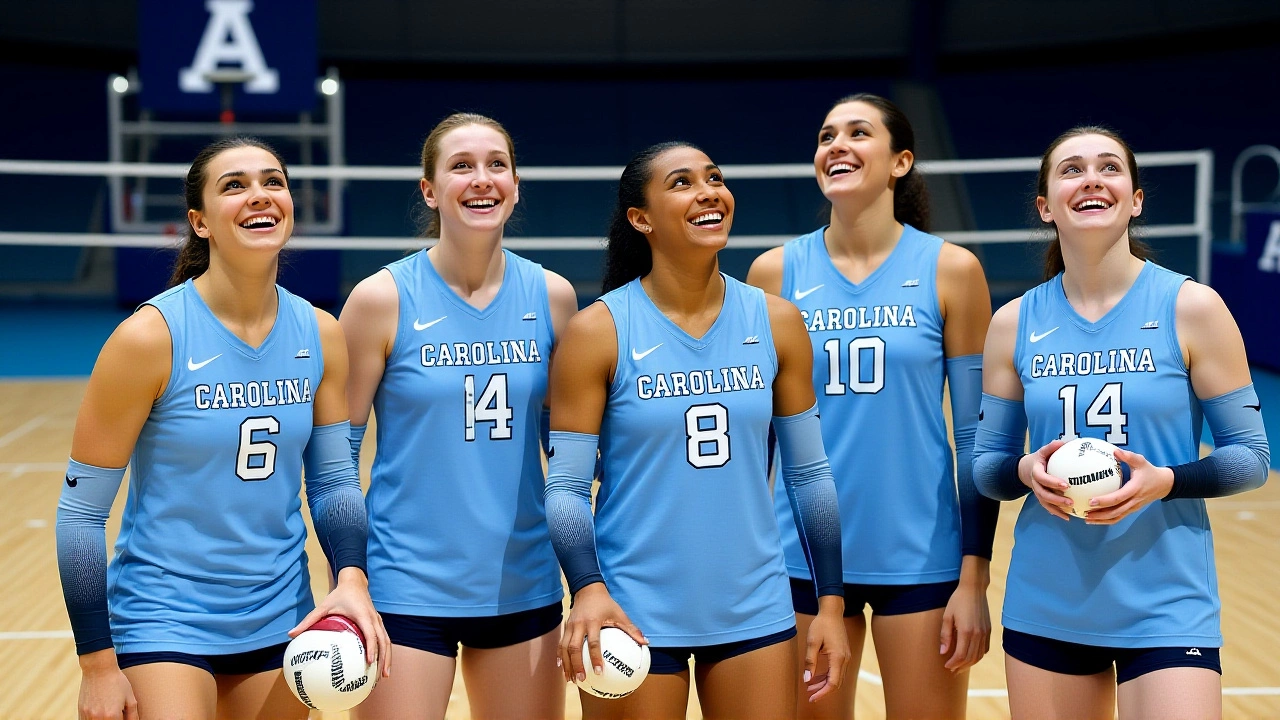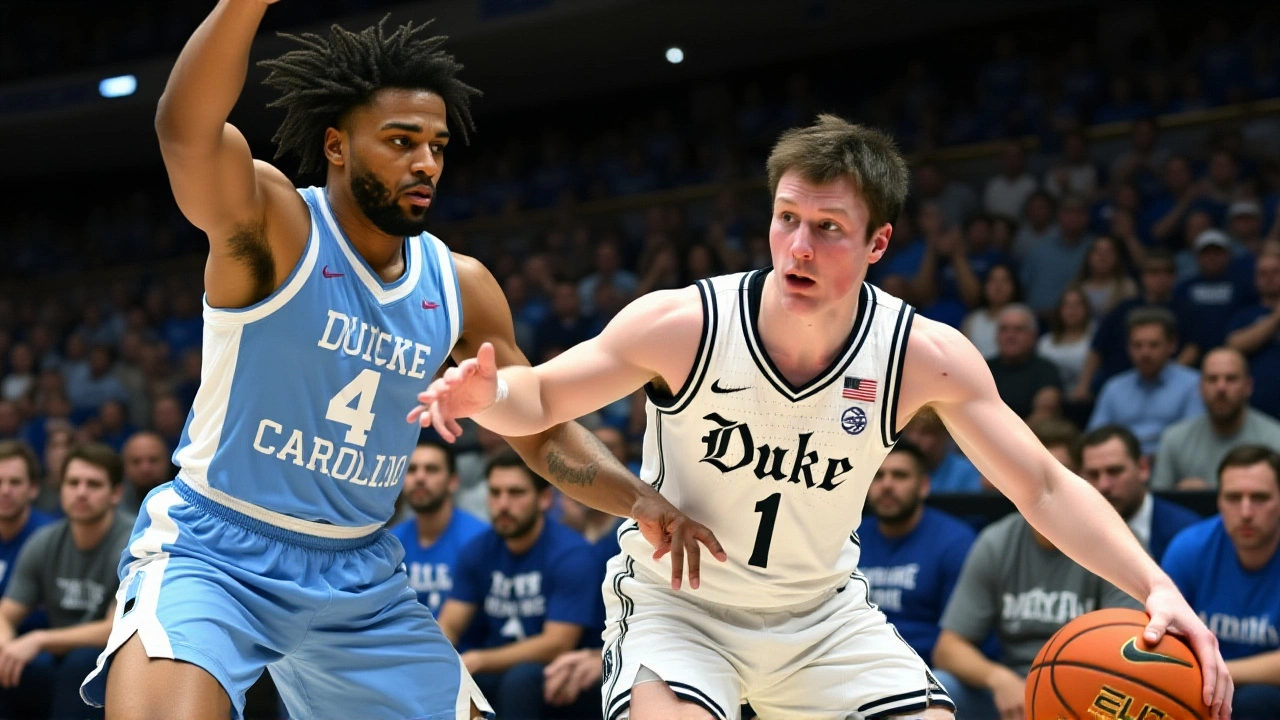When the final whistle blew at Kenan Stadium on Saturday, November 16, 2024, the Duke Blue Devils had done the unthinkable—won their second straight game against the North Carolina Tar Heels in a 32-25 thriller that hinged on four costly special teams errors. The loss sealed a losing season for UNC, ending a year that began with hope and ended with frustration, even as the team played well enough on both sides of the ball. The Victory Bell, the trophy awarded to the winner of this historic rivalry, stayed in Durham. And the blame? Not just on the offense. Not just the defense. It was the kickoffs, the punts, and the missed tackles that turned a close game into a collapse.
Pre-Game Analysis: The Strategic Blueprint That Didn’t Hold
Weeks before kickoff, Jason Staples, the sharp-eyed football analyst for Inside Carolina, laid out the keys to victory in a livestreamed breakdown with Greg Barnes and Tommy Ashley. At the 3:16 mark, he dismissed overhyped defensive schemes, insisting the real challenge was generating pressure on Darian Mensah, Duke’s elusive quarterback. "The fact that you’ve got to generate [pressure] with your front four is the problem," Staples noted, "because [Mensah] does a good enough job of kind of feeling the pressure and moving around." That insight proved chillingly accurate. UNC’s defensive line, already thin due to injuries, couldn’t get consistent push. Mensah escaped, scrambled, and found open receivers with unnerving calm. Staples also zeroed in on Duke’s running game at 15:08: "Stopping Duke’s running game is a key." But when Duke’s backfield, led by freshman standout Isaiah Johnson, gained 137 yards on 28 carries, it wasn’t just about stopping the run—it was about failing to contain the play-action that followed. And at 20:01, Staples warned: "Duke will go on 4th down." They did—four times. Three were successful, including a 12-yard scramble by Mensah on 4th-and-9 in the fourth quarter that kept alive the drive that ended in the go-ahead touchdown.Thaddeus Dixon’s Return—And the Shadow It Cast
The biggest positive for UNC heading into the game was the return of Thaddeus Dixon, the star defensive back and projected 2026 NFL Draft pick. After missing five games with a hamstring strain, Dixon was cleared from the ACC injury report for the first time since mid-October. His presence was supposed to stabilize a secondary that had been shredded in losses to Miami and Virginia Tech. In his first game back, Dixon recorded six tackles and two pass deflections. But the numbers didn’t tell the whole story. Opponents targeted him only three times—because they knew he was back, and they feared him. That meant Duke’s offense shifted focus elsewhere, exploiting UNC’s depth issues at corner. Meanwhile, fellow DB Kaleb Cost, listed as questionable, played through a shoulder injury and was on the field for 82% of snaps. He had an interception, but also missed two tackles that led to first downs.The Special Teams Disaster That Changed Everything
The real killer? Special teams. After UNC scored on its opening drive—a 75-yard, 10-play march capped by a 12-yard TD pass from QB Chase Brice—Duke responded with a 40-yard field goal. That wasn’t the problem. The problem was what came after: a muffed punt return by freshman returner Malik Reynolds that gave Duke the ball at the UNC 35. Two plays later, a 15-yard touchdown run made it 14-7. Then, after UNC tied it at 17-17, a 54-yard punt by Logan Johnson was returned 32 yards to the UNC 41. Duke scored a field goal on that drive. Then, late in the third quarter, a blocked extra point after a UNC touchdown—only the second blocked PAT of the season in the ACC—left the score at 25-23. Four special teams mistakes. Twenty-nine of Duke’s 32 points. It wasn’t just poor execution. It was a pattern. "Penalties killing this team," Staples noted at 13:10. "And now, special teams? That’s the new weakness. That’s the identity now."
Why the Offensive Game Plan Fell Apart
At 38:00, Staples had advised UNC’s offense to "Attack Duke’s LBs." The Tar Heels tried—running screens, crossing routes, quick slants. But Duke’s linebackers, led by All-ACC candidate Isaiah Hines, were disciplined. They didn’t bite. They stayed home. And when UNC’s offensive line, already missing four starters due to injury—including Christo Kelly and Aidan Banfield—couldn’t hold the edge, Brice was under pressure on 47% of his dropbacks. The offensive MVP Staples hinted at at 41:20? It never showed up. Antonio Lopez, who had his "best game as a Tar Heel" with 7 catches for 94 yards, was the only consistent threat. But one receiver can’t carry a unit when the quarterback is sacked three times and the running game averages 2.8 yards per carry.The Aftermath: A Season of "What If?"
The loss was UNC’s sixth of the season. It also marked the first time since 2018 that the Tar Heels lost to Duke in back-to-back seasons. "They played well enough on both sides of the ball," said Staples in the post-game analysis, "but they didn’t play clean. And in this rivalry, clean is everything." The phrase "Bill Belichick’s first season in Chapel Hill"—a tongue-in-cheek reference to the program’s defensive overhaul under new coordinator Steve Clinkscale—rang hollow. The defense didn’t collapse. It just got outsmarted. And out-executed. The game ended with Duke’s defense forcing a three-and-out on UNC’s final possession, sealing the win with a 21-yard interception return by safety Quinn Williams. It was the kind of play that doesn’t show up in stats but defines rivalries. The Victory Bell rang once more in Durham. And in Chapel Hill, fans walked out in silence, wondering if the next season might bring more of the same.
What’s Next for UNC Football?
With the regular season over, UNC now turns to bowl eligibility—a long shot at 4-7. But the real questions are about identity. Can the offensive line be rebuilt in the offseason? Will Dixon return for his senior year, or enter the draft? And can the special teams unit be fixed before next September? The answer to all three will determine whether this program is on the rise—or stuck in a cycle of near-misses.Frequently Asked Questions
Why did Duke win despite UNC playing well on offense and defense?
Duke won because UNC’s special teams committed four critical errors—muffed punt return, blocked PAT, poor punt placement, and a long return—that directly led to 29 of Duke’s 32 points. Even though UNC’s offense moved the ball and the defense held Duke to 32 points (below their season average), those mistakes turned close drives into easy scores. In rivalry games, execution trumps talent.
How did Thaddeus Dixon’s return impact the game?
Dixon’s return gave UNC’s secondary a psychological boost—he recorded six tackles and two pass deflections—but Duke adjusted by avoiding him, targeting weaker corners instead. His presence forced Duke to change its passing strategy, which ironically opened lanes for the run game. While Dixon played well, the lack of depth around him meant his impact was limited.
What did Jason Staples get right in his pre-game analysis?
Staples correctly identified Duke’s reliance on Darian Mensah’s mobility, the importance of stopping the run to prevent play-action bombs, and Duke’s aggressive 4th-down tendencies—all of which materialized. He also warned that UNC’s front four had to generate pressure without blitzing, a strategy the Tar Heels failed to execute. His insights were accurate; the team just didn’t implement them.
Which UNC players were missing due to injury?
UNC was without five offensive linemen (Kelly, Banfield, Lindberg, and two others), three linebackers (Onyeagoro, Bennett, Houser), a fullback, a wide receiver (Jason Robinson Jr.), and a defensive lineman (Laderion Williams). That’s nine starters out, forcing backups into critical roles—especially on a line that allowed five sacks and consistently failed to open running lanes.
Is this loss a sign of deeper problems in the program?
Yes. UNC has now lost three of its last four games to Duke, and this loss came despite having more talent on paper. The recurring themes—special teams blunders, poor execution under pressure, and an inability to close out close games—suggest a cultural issue, not just a coaching one. Until the team learns to win the small battles, big wins will remain out of reach.
What’s the outlook for next season?
With key players like Thaddeus Dixon and Antonio Lopez returning, and a strong recruiting class on the way, UNC has the pieces. But the offensive line must be rebuilt, special teams must be overhauled, and the team needs to develop a killer instinct. If those areas improve, a 7-5 season is possible. If not, another 4-8 record looms—and another year of watching Duke ring the bell.
